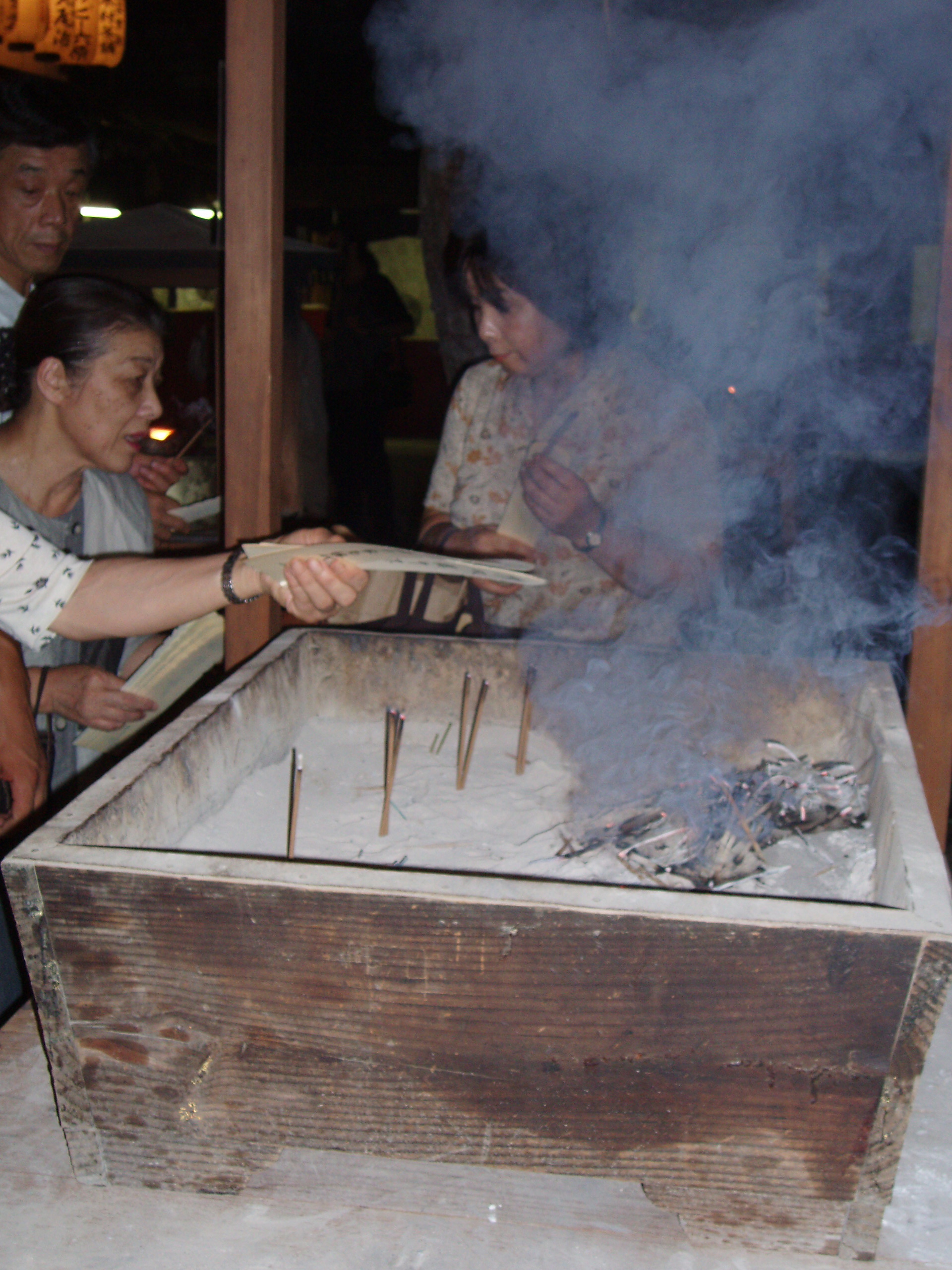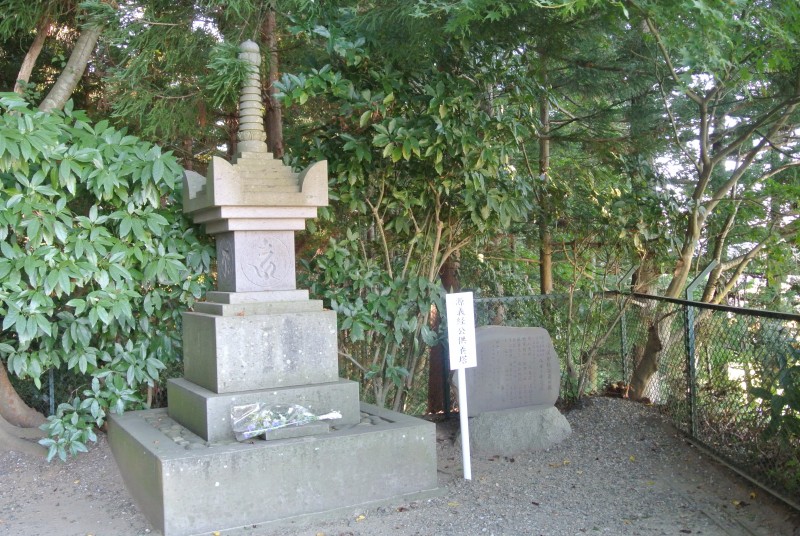
At Obon people burn bunches of incense to call back the dead
Today is Obon, ‘the Japanese day of the dead’, and an occasion about which Green Shinto has posted in several previous years. (Click here for reflections on Japanese and the dead, here for Kyoto’s Daimonji festival, and here for a comparison with Halloween.)
Obon is of course the supreme example of Japan’s cult of the dead, commonly referred to as ‘ancestor worship’, though ‘ancestor reverence’ would be nearer the mark. No one has written better on the subject than Lafcadio Hearn, whose Japan: An Attempt at Interpretation (1904) was devoted to the practice. Ironically, it was the last book he wrote before dying, and the book was published shortly after his death. (Click here to learn more about Hearn and ancestor worship).

Kyoto’s Daimonji festival on Aug 16 to send back the spirits of the dead after their visit back to their family homes (courtesy of Aaron Williamson)
In his book Hearn shows how the dead continue to live on in Japan, and how indeed they control the present. Time and again in his writing Hearn asserts that the living are ruled by the dead. Humans are not autonomous individuals able to think and act for themselves, but are guided by everyone who came before. ‘We are, each and all, infinite compounds of fragments or anterior lives,’ Hearn wrote in Gleanings in Buddha-Fields (1897), p.92.
It is a recurring theme in Hearn’s writings, and one that proved a rich vein, for it infuses his view of life with the power of the unseen past. The poet Edward Thomas, who surprisingly wrote a book about him, noted that he was ‘most individual when he submits to his favourite obsession, that of the infinite ancestry of every soul and every act.’ (Lafcadio Hearn, p.70)
The scale on which Hearn conceives things is vast. He writes of ‘unimaginably countless experiences in an immeasurable past’, of ‘trillions of trillions of ghostly memories’, of the ‘myriad million voices of all humanity’, of the ‘dim loving impulses of generations unremembered’, of ‘countless anterior existences’. ‘The mind is as much a composite of souls as the body is of cells,’ he writes in Chapter IV of Kokoro (1896).
IN Hearn’s view, then, every human is prone to the numberless experiences of an immeasurable past. A child’s natural love for its mother for example is born of ‘a million caresses in countless previous existences.’ It explains for him many of the mysteries of life, such as deja vu, why we thrill to certain kinds of music or to certain sights such as sunset. Although we like to think of ourselves as autonomous individuals, he notes in an inspired deconstruction of the self in an essay on ‘Dust’ that humans are so much more than that. On this day of all days, it’s a curiously comforting thought for those concerned about the prospect of death.
I, am individual; an individual soul! Nay, I am a population – a population unthinkable for multitude, even by groups of a thousand millions! Generations of generations I am, aeons of aeons! Countless times the concourse now making me has scattered, and mixed with other scatterings. Of what concern, then, the next disintegration?

Cemeteries at Obon time are full of lanterns to welcome back the spirits of the dead. For Lafcadio Hearn nothing was more central to Japanese culture than belief in the living dead.
******************
In the Shinto-Buddhist framework, death is usually given over to Buddhist priests to take care of, for they have a greater concern with the afterlife and reincarnation. For Westerners used to a single funeral ceremony, the number of events held by Japanese families can be startiing. Depending on the sect the times of commemoration ceremonies vary, but in general they take place after 7 days, 14 days, 21 days, 28 days, 35 days, 42 days, and 49 days. These are considered the first 7 steps to a deceased person becoming a “hotoke-sama” (buddha). Seven being a magic number, you could say that the deceased are helped thereby to enter ‘seventh heaven’!
Yet the process does not stop after 49 days, for there are the 1 year, 3 year, 7 year, 13 year, 21 year and 33 year memorial ceremonies as well. Some sects have a 49 year ceremony too if relatives still survive. In addition, there is the annual Obon remembrance in mid-August, as well as grave-cleaning visits at equinox (Shubun and Shunbun) or year-end. One can understand why Hearn saw the dead as occupying such an important place in Japanese culture!
The ceremonies are not only an important part of the mourning process, but serve to keep the deceased “alive” in the hearts of those left behind. The prayers are said to guide the dead in the afterworld, in that the chanting encourages them on their way. Similarly the constant incense burning for the first 49 days lights their path for them. There is a ghostly and poetic touch to some of the prayers, as illustrated below:
Fudaraku ya / Kishi utsu nami wa / Mikumano no / Nachi no oyama ni/ Hibiku taki tsuse
On Kannon’s island paradise, / Waves crash upon the shores; / In the sacred land of Kumano, /
Down Nachi Mountain, / The thundering waterfall cascades.
Commenting on the whole process, one Japanese remarks, ‘It’s a lot of work at times, but in the beginning it keeps you focused on the ceremonies and gets you through the first few weeks, and after that, the houji [memorial ceremonies] are a time for getting together and remembering people.’

RIP

Very nice and informative read.
Thanks.